 How to Build a Trebuchet
How to Build a Trebuchet
A trebuchet is a Medieval siege engine. They were primarily constructed outside the walls of castles during sieges. They were used to hurl huge boulders at the stone walls. What attracted me to trebs initially was the simplicity. They're basically just a sling with a big weight for power.
I built this treb in my basement in an evening. It is constructed of 1x2 pine, ¼ inch steel rod, 1¼ inch deck screws, a few eye bolts, a cotter pin, string, thread and pajama rags. Though somewhat less impressive than it's ancient predecessors, it can still send a one-inch ball of Play-Doh TM about 25 feet. It could probably throw farther if it weren't for the 8-foot ceilings. The angle of the projectile immediately after the sling opens should be 45 degrees for maximum distance. However, it's set to quite a bit less to avoid hitting the ceiling.
I've had a number of requests for copies of the plans I used. They are available
here, though I modified them slightly.

Movies
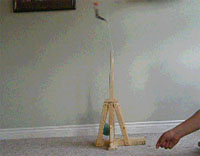
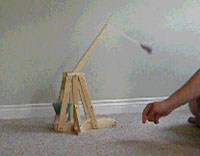
Pictures (below ad)
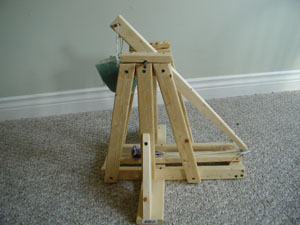
This is what the completed treb looks like when it's ready to activate. The counter weight is raised to it's maximum height, the arm is pulled down to the ground and held in place with a pin. The loose end of the sling has been placed over the angled pin.
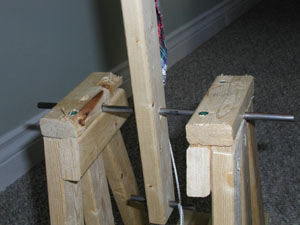
This is not a pretty treb. The axle is held in place by friction with the two supports and juts out considerably. The hole in the throwing arm is slightly larger than the diameter of the axle to allow the arm to move. This means the arm has a tendency to move sideways and must be repositioned to the center of the axle after each firing. I've seen some beautiful trebs for sale online made out of exotic woods. Unfortunately, they are very expensive.
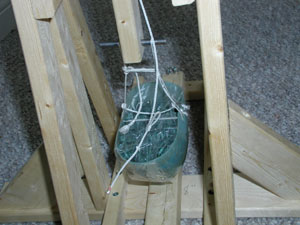
Again, not a pretty treb. The counter weight is a Tupperware container filled with screws and sealed with clear packing tape. The hinge assembly is made of string and ¼ inch steel rod. Some trebs have a fixed counter weight (no hinge), but are considerably less efficient.
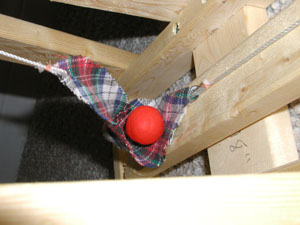
The business end. The sling is made of string sewed with thread at the ends to prevent fraying. The pouch of the sling is made from an old pair of pajamas. A notch has been taken out of both sides and sewed to give it a round shape. Here, the pouch contains a ball of Play-Doh TM about one inch in diameter.
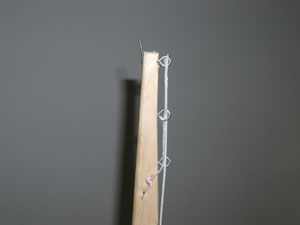
Tiny adjustments of the angled pin can cause huge increases or decreases in efficiency. Optimally, one end of the sling slips off this pin when the tangent of the arc of the swinging sling is at 45 degrees. A pin is placed through the eye hook located just below the angled pin when the arm is lowered. This acts as a safety mechanism and frees up both hands to load and position the sling. The two lower eye hooks are just there to hold any extra string clear of the working parts.
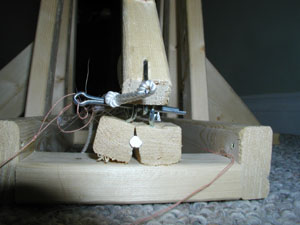
This is the safety mechanism in ready mode. The cotter pin holds the arm down. The thread attached to the pin is used pull the pin from a distance. Even though this is a small treb, the angled pin is sharp and moves quickly. Obviously, if you have your face over the thing you are just begging for an injured eye or bloody nose. BE CAREFUL IF YOU DECIDE TO MAKE A TREBUCHET!
 Fun & Games
Fun & Games Geek Stuff
Geek Stuff


